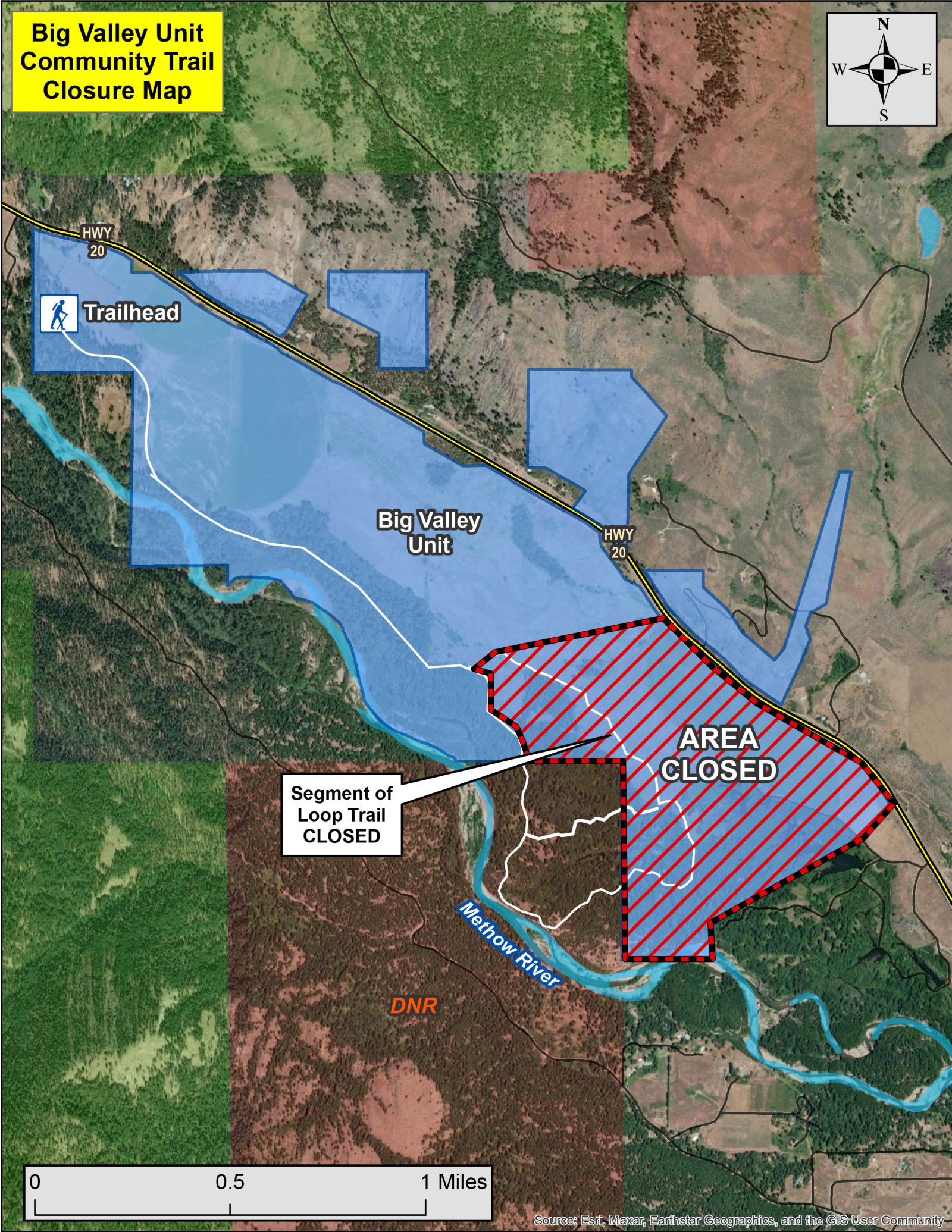ARCHIVED NEWS RELEASE
This document is provided for archival purposes only. Archived documents
do not reflect current WDFW regulations or policy and may contain factual
inaccuracies.
News release May 18, 2022
Brandon Troyer, 509-996- 2559
Staci Lehman, 509-710-4511
EPHRATA — A 240 acre section of the Big Valley Unit of the Washington Department of Fish and Wildlife (WDFW) Methow Wildlife Area is closed through the end of September to protect a pair of nesting sandhill cranes. These birds are a state endangered species and the only known pair of nesting sandhill cranes ever documented in the Methow Valley.
The cranes first showed up in the area last year and hatched two colts (baby cranes) but neither survived. They appear to be nesting in the same spot, or very close to it, this year. Sandhill cranes prefer wet meadows, marshes, shallow ponds, pastures, and grainfields for nesting, roosting, and/or feeding. The loss of these kind of habitats, coupled with poor breeding success and colt survival, means that nesting sandhill cranes are in jeopardy of extinction in Washington.
These birds are also extremely wary and repeated disturbance often results in nest desertion and increases the likelihood of predation by other species on unattended nests. For this reason, it is important for humans to stay outside of the nesting area. The closure is expected to have minimal impact on users of the wildlife area. The majority of the closed area is agricultural fields, grazing pastures or wetlands. The primary Big Valley trail, which leads to the Methow River, remains open. At a total of 34,500 acres, the Methow Wildlife Area has plenty of space available for public use outside the closed area.
For birdwatchers who want to take advantage of this unique wildlife viewing opportunity, the cranes can often be seen from points outside the closed area. WDFW requests that birdwatchers trying to catch a glimpse of the birds observe all traffic laws and respect private property. WDFW Police officers patrol the area regularly and will keep a close watch to ensure no one disturbs the cranes or acts irresponsibly.
The Methow Wildlife Area is comprised of shrubsteppe, meadow-steppe, grasslands, and dry coniferous ponderosa pine forests and provides migratory corridors and habitat for mule deer herds and other fish and wildlife from songbirds to salmon. These lands also provide access for wildlife viewing, hunting, fishing, hiking, horseback riding, cross-country skiing and other recreation.
The Washington Department of Fish and Wildlife works to preserve, protect, and perpetuate fish, wildlife and ecosystems while providing sustainable fish and wildlife recreational and commercial opportunities. WDFW is steward to about one million acres of public land statewide, with 33 wildlife areas and more than 450 water access areas around the state. These public lands help sustain wildlife habitat and public recreation opportunities for current and future generations.
